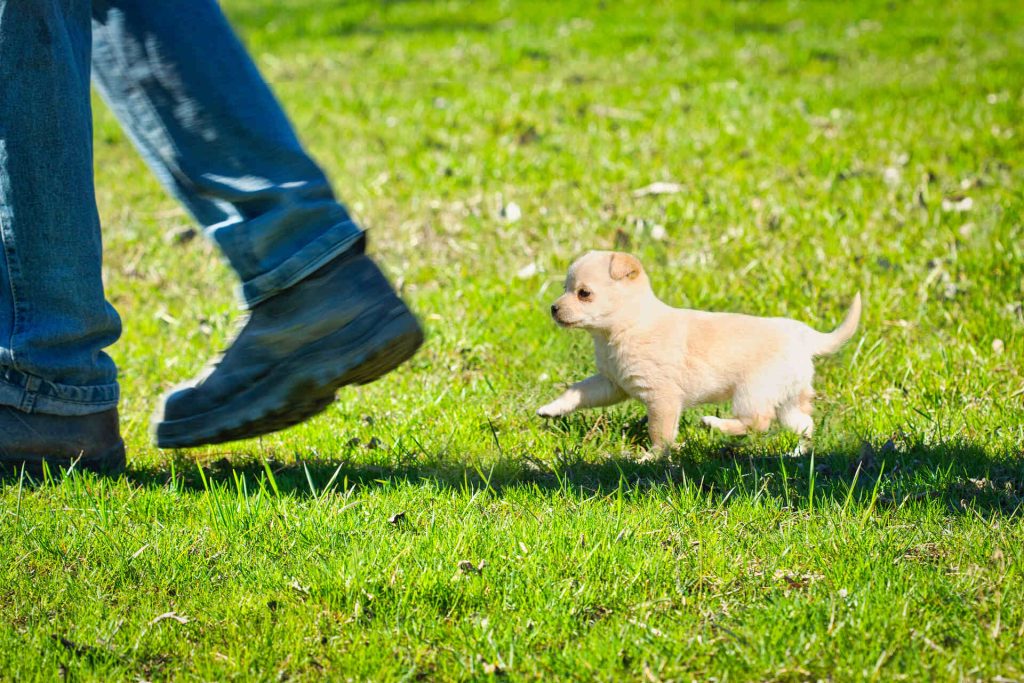How to Teach Basic Commands to Your Dog: Effective Training Tips

The Transformative Power of Dog Training
Training your dog can be a transformative experience for both you and your furry friend. Mastering basic commands is not just about fostering obedience; it enhances communication, boosts safety, and strengthens your bond with your pet. With the right approach, you can turn training into a fun and rewarding activity that yields lifelong benefits.
There are several compelling reasons why investing time in training your dog is essential:
- Improved Safety: Basic commands like “sit” and “stay” can prevent dangerous situations. For instance, teaching your dog to “stay” before crossing a busy street can save them from potential accidents, while “come” can be a lifesaver if they ever escape your yard.
- Enhanced Behavior: Well-trained dogs are typically better socialized and easier to manage in various settings. A trained dog is less likely to bark excessively, jump on guests, or engage in destructive behavior, making outings and visits more enjoyable.
- Deepened Bond: Training sessions create a shared experience that helps build trust. Engaging with your dog during training encourages cooperation and fosters mutual respect, leading to a deeper emotional connection.
Contrary to popular belief, training should not wait until the dog is older. Beginning at a young age is crucial, as it lays a solid foundation for lifelong skills. For example, puppies as young as eight weeks can start learning basic commands. Early training can help socialization with other dogs and people, reducing the likelihood of fear or aggression later on.
The key to successful training lies in consistency, patience, and positive reinforcement. Rewarding your dog with treats, praise, or playtime when they follow a command promotes a positive learning environment. Consider a scenario where you teach your dog to fetch a ball. Each time they bring it back, offer them a treat and enthusiastic praise, reinforcing the behavior and making them eager to play and learn.
As you explore this guide, prepare to uncover effective training tips that will make teaching commands not only easier but also more pleasurable for both you and your pet. Understanding your dog’s learning style—whether they respond better to verbal cues or hand signals—can significantly enhance the effectiveness of training sessions. By applying specific techniques tailored to your dog’s personality, you will pave the way for a well-behaved companion, making interactions more enjoyable and fulfilling.

So, let’s embark on this training journey together. With patience and commitment, you can unlock a world of enhanced communication with your canine companion, leading to countless cherished moments in your shared life.
DISCOVER MORE: Click here for tips on pet safety and comfort
Establishing a Strong Foundation: The Basics of Dog Training
When embarking on the journey of teaching your dog basic commands, it is essential to establish a strong foundation that will facilitate learning. Understanding your dog’s natural instincts and behavioral patterns can significantly enhance training effectiveness. Dogs are social creatures that thrive on interaction with their human companions. By tapping into this social nature, you can tailor your training approach to suit your dog’s individual personality and needs.
One of the first steps in teaching commands is to choose an appropriate training environment. A quiet space with minimal distractions is ideal for initial sessions. This allows your dog to focus on you and the task at hand. As your dog becomes proficient in the commands, you can gradually introduce them to more stimulating environments, such as parks or busy sidewalks, to further challenge their learning and reinforce their obedience.
Here are some key aspects to consider when training your dog:
- Use Clear Commands: Always use the same word or phrase for each command. For instance, if you want your dog to sit, consistently use “sit” rather than mixing it with words like “down” or “stop.” Clarity is vital for your dog to understand what is expected.
- Incorporate Hand Signals: Dogs are adept at picking up visual cues. Pairing verbal commands with hand signals can reinforce the learning process. For example, when teaching “sit,” raise your hand palm up at the same time you say the command. This dual approach can enhance comprehension.
- Keep It Short and Engaging: Dogs have short attention spans, so limit training sessions to about 5-10 minutes. Frequent, short sessions throughout the day will keep your dog engaged and motivated, minimizing frustration for both you and your pet.
Timing is everything when it comes to training. When your dog successfully follows a command, immediately reward them with a treat or enthusiastic praise. This immediate reinforcement helps build a positive association with the action, making them more likely to repeat the behavior in the future. For example, if you tell your dog to “lie down” and they do it, reward them right away. This timing helps them connect the command with the action.
It is also important to be patient and expect some mistakes along the way. Dogs, much like humans, learn at different paces. If your dog does not seem to understand a command right away, do not get discouraged. Reinforce the behavior consistently, and they will gradually catch on. Keeping a calm and positive demeanor during training will reduce your dog’s anxiety and help them feel more comfortable.
As you progress with the basic commands, remember that repetition is key in solidifying your dog’s learning. Each command learned is another building block in your dog’s behavioral repertoire. In the next part of this guide, we will explore specific commands to teach your dog and effective techniques for each command, helping you both reach new heights in your training journey.
How to Teach Basic Commands to Your Dog: Effective Training Tips
Learning to effectively communicate with your dog through basic commands is not only essential for their safety but also enhances the bond between you and your pet. In this section, we will delve into the most effective training methods to teach your dog basic commands.
Using Positive Reinforcement
One of the most successful techniques is positive reinforcement. This method involves rewarding your dog with treats, praise, or playtime when they successfully follow a command. For instance, when teaching the command “sit,” wait for your dog to naturally sit, then immediately reward them. This helps your dog associate the command with a positive experience, making them more likely to respond in the future.
Consistency is Key
Another critical aspect of training is consistency. Use the same verbal commands and gestures each time to avoid confusing your dog. Always ensure that everyone in your household uses the same commands and methods, which helps your dog learn without mixed signals. For example, if you are teaching the “stay” command, maintain the same vocal tone and hand signal every time.
Short, Engaging Sessions
Dogs have shorter attention spans, so keep training sessions brief and engaging—ideally between 5 to 10 minutes each. You can repeat these sessions several times throughout the day. This will keep your pet interested and prevent frustration for both of you.
Socialization and Exposure
It is also crucial to expose your dog to various environments and situations during their training. This not only aids in teaching commands but also helps your dog become more accustomed to different surroundings, making them less anxious in new situations. Practice patience and always remember that each dog learns at their own pace. By fostering an environment of encouragement and understanding, your dog will thrive. As you embark on this journey of training, consider exploring new techniques that suit your style and your dog’s personality.
| Training Method | Advantages |
|---|---|
| Positive Reinforcement | Strengthens the bond and motivates your dog to learn. |
| Consistency | Minimizes confusion and reinforces learning effectively. |
With these tips in mind, you can embark on your training journey with confidence. Don’t hesitate to seek further guidance or resources to ensure a comprehensive understanding of your dog’s training needs. Effective dog training is a rewarding experience that you both will cherish for years to come.
LEARN MORE: Click here to discover the connection between pet behavior and emotional well-being
Teaching Essential Commands: Practical Techniques for Success
As you embark on the journey to teach your dog basic commands, it’s essential to focus on a select few that can pave the way for effective communication and training. Commands such as “sit,” “stay,” “come,” and “down” are foundational not only for your dog’s obedience but also for enhancing the bond between you and your furry friend. Each command serves a unique purpose and can potentially keep your dog safe. Here are practical techniques to teach these essential commands effectively.
1. Teaching “Sit”
The “sit” command is often the first command taught to dogs, and for good reason—it’s simple and forms the basis for other commands. To teach “sit,” follow these steps:
- Get your dog’s attention: Use a treat to get your dog’s focus.
- Position the treat: Hold the treat close to your dog’s nose, and then slowly move it upward. As their head rises to follow the treat, their bottom will naturally lower.
- Say the command: Just before their bottom touches the ground, say “sit.” As soon as they sit, reward them with the treat and praise.
Consistency is critical; practice this command several times a day, ensuring you always use the same word and gesture.
2. Teaching “Stay”
The “stay” command is invaluable for keeping your dog out of trouble. It promotes patience and self-control. Here’s how to execute it:
- Begin in a calm environment: Have your dog sit, and then place your hand out, palm facing them, while saying “stay.”
- Take a step back: If your dog remains in place, immediately reward them with a treat and praise.
- Gradually increase distance: Over time, increase the distance and duration before returning to reward them. If they break the command, do not punish—simply ask them to “sit” again and repeat the stay exercise.
3. Teaching “Come”
The “come” command is vital for safety during walks or when your dog roams off. To teach this command:
- Use a leash: Start with your dog on a leash in a quiet area. Allow them to explore within a controlled distance.
- Call them: Use an enthusiastic tone to call your dog’s name followed by “come.” Gently pull on the leash if needed to encourage them to approach.
- Reward and praise: As soon as they come to you, reinforce the action with a reward and positive reinforcement.
Over time, practice this command in various environments with increasing levels of distraction, always rewarding their success.
4. Teaching “Down”
The “down” command is essential for teaching good manners. To effectively teach your dog to lie down:
- Start with them in a sitting position: Have your dog sit in front of you. Hold a treat close to their nose and then move your hand down to the floor, allowing their body to follow.
- Say “down”: Once they are lying down, reward them immediately.
- Repetition is key: Practice this regularly, gradually increasing the time they hold the position before earning the reward.
As these commands become second nature for your dog, continue to practice them throughout your day-to-day routine. Incorporating commands during walks, playtime, or even mealtime can reinforce learning and establish a consistent language between you and your dog. Teaching your dog these basic commands is more than just a training activity—it fosters understanding and trust in your relationship, creating a well-behaved companion for years to come.
DISCOVER MORE: Click here to learn how to strengthen your pet’s good behaviors
Conclusion: Strengthening the Bond Through Training
In your journey to teach your dog basic commands, remember that patience, consistency, and positive reinforcement are your best tools. These foundational commands not only enhance your dog’s obedience but also lay the groundwork for a deeper, more rewarding relationship between you and your furry companion. By keeping training sessions short and enjoyable, you ensure that your dog remains engaged and eager to learn. Over time, you’ll notice your dog not only mastering commands like “sit,” “stay,” “come,” and “down,” but also exhibiting improved behavior in various situations.
It’s also crucial to embrace the benefits of socialization and real-world experiences. Taking your dog out to different environments where they can encounter new sounds, sights, and smells while practicing commands will help solidify their training. This exposure aids in developing their confidence and reinforces their learning, ultimately contributing to their overall well-being.
As you progress, consider exploring advanced training techniques and commands to keep the learning process exciting for both you and your dog. Remember, each dog is unique, and what works for one may not work for another. Stay observant and adaptable in your training methods. In short, teaching your dog to follow basic commands is an ongoing journey that promotes safety, enhances quality of life, and elevates the unconditional bond that exists between you. So, take the time to invest in this journey, and watch as your hard work pays off in the form of a happy, well-behaved canine companion.



